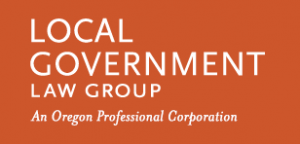HB 2016 – Fact or Fiction?
Diana Moffat
From our Spring 2020 e-newsletter
*For a full list of the provisions of HB 2016 you can refer to LGLG’s previous newsletters and for a copy of the complete text of HB 2016 you can go here:
https://olis.oregonlegislature.gov/liz/2015R1/Downloads/MeasureDocument/HB2016/Enrolled
Where were you on June 27, 2018? Do you remember the Janus decision being announced that day? I certainly remember that day. I was in bargaining with a local LIUNA union. The mood immediately became sullen, on the part of the union. Mark Janus, the plaintiff in the Supreme Court case, issued a statement: “My name is Mark Janus, and I was the plaintiff in the Supreme Court case Janus v. AFSCME. On June 27, 2018, the Court ruled that government employees like me could not be forced to pay a government union as a condition of working in public service. This landmark ruling was a tremendous victory for workers’ rights, and I was privileged to be a part of it.”
Fast forward to June 20, 2019, when, in reaction to the Janus decision, Oregon Governor Brown, signed House Bill (“HB”) 2016 into law, which placed numerous new restrictions and requirements on how public sector employers do business with unions and unionized workforces. Those provisions went into effect on January 1st of this year.
There seems to be a lot of fact v. fiction in the Oregon labor arena as to what HB 2016 does, or doesn’t do. So, let’s take a look at FACT or FICTION.
Paid leave time for union collective bargaining preparation. Some unions are asserting that HB 2016 requires an employer to allow employees to be paid, with no deduction from their paid leave banks, to PREPARE for collective bargaining sessions. FACT or FICTION? Mostly fiction:
First let’s look at the actual language of HB 2016. Section 3 provides that: “A public employer shall grant public employees who are designated representatives reasonable time to engage in the following activities during the public employee’s regularly scheduled work hours without loss of compensation, seniority, leave accrual or any other benefits.” Subsection (d) lists one of those activities as being when an employee acts “as a representative of the exclusive representative for employees within the bargaining unit for purposes of collective bargaining.” Unlike subsection (c) wherein the legislation specifically provides for time to “participate in or prepare” for certain activities, no such provision is made for preparation time under subsection (d). Now with that said, however, paid time for purposes of employees participating in, and even preparing for, collective bargaining has been, and remains, a mandatory subject of bargaining. However, the new legislation does not REQUIRE that the employer agree to pay for preparation time. It is also important to note that the legislation does not define what constitutes “reasonable time” for participation in bargaining. That remains a subject of bargaining.
Release time. Some unions have asserted that release time requires a public employer to allow union employees to conduct union business on paid time, with no deletions from the employee’s paid leave bank. FACT or FICTION? Mostly fiction:
The new law defines “release time” as “the period of time when a public employee who is a designated representative takes a leave of absence from the employee’s regular public employment to conduct labor organization business.” Release time has nothing to do with conducting business on an occasional basis. It involves a complete leave of absence from the employee’s position. Section 4 goes on to provide for a “reasonable term” of release time – again, a matter of bargaining, followed by specific provisions as to job re-entitlement, reimbursement by the union for any costs of compensation and benefits to the employer, etc.
Forced union membership. Some unions claim that they can limit an employee’s right to withdraw their union membership by confining the withdrawal of membership to a specific, and limited, period. FACT or FICTION? Mostly fact:
In reality the union’s practice of limiting members’ ability to withdraw from their membership in the union has been going on for a long time. Most folks just never knew about it. That was mainly because, prior to the Janus decision, the employee’s payment of money/dues happened regardless of their membership in the union, or not. If they elected to no longer be a member of the union, the employee still had to pay their “fair share” dues. The limitation for withdrawing from the union was usually printed in small print on the union dues authorization card. The typical language limited a change in membership status to a small window of time once per year, or to the end of the period of the applicable Collective bargaining agreement. When the Janus decision was announced, which prohibited fair share dues, unions became alarmed that they might lose union members AND lose union dues.
HB 2016 was the union’s push back to that likely reality of the Janus decision.
Section 6 provides that the “employee may enter into an agreement with a labor organization that is the exclusive representative to provide authorization for a public employer to make a deduction from the salary or wages of the public employee … to pay dues, fees and any other assessments or authorized deductions to the labor organization ….” Note that the agreement (authorization) is between the employee and the union – not between the employee and the employer. Subsection (4) provides that the “authorization is independent of the employee’s membership status in the labor organization to which payment is remitted and irrespective of whether a collective bargaining agreement authorizes the deduction.” Subsection (6) provides that the “employee’s authorization for a public employer to make a deduction … shall remain in effect until the public employee revokes the authorization in the manner provided by the terms of the agreement.”
